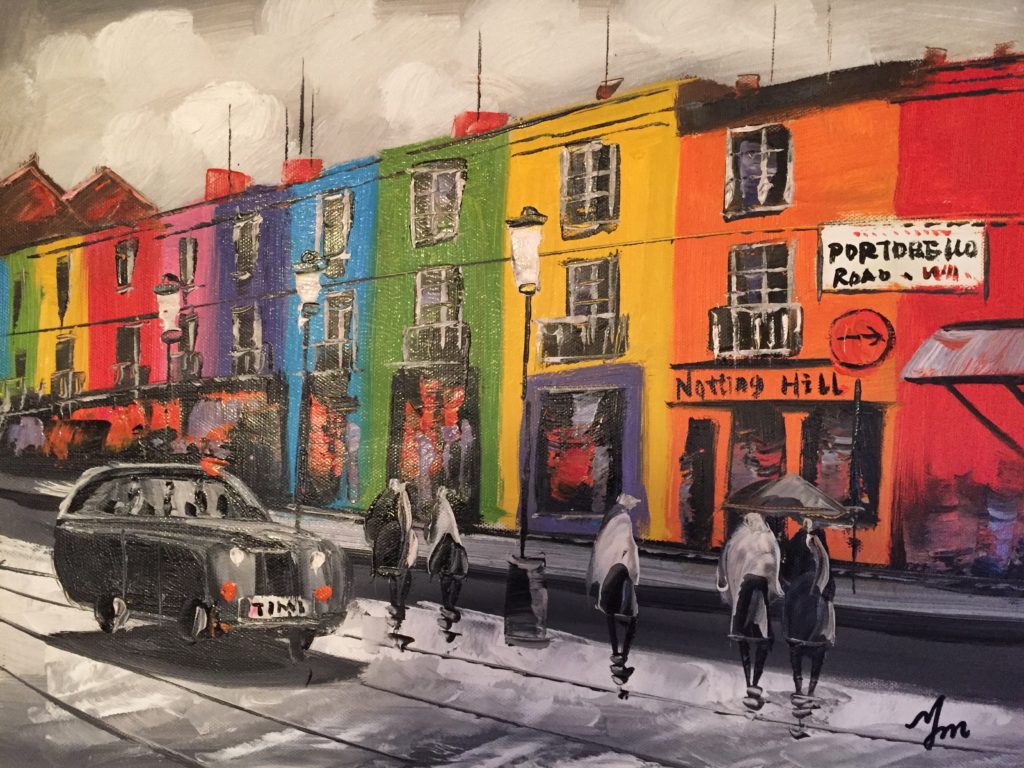We dodged the traffic…

we tried the egg coffee…

visited the Temple of literature…


ate some delicious banh mi…

visited the markets…


watched a water puppet show…

and ended the night with some jazz…


it's 40k kilometers around the world's circumference
We dodged the traffic…

we tried the egg coffee…

visited the Temple of literature…


ate some delicious banh mi…

visited the markets…


watched a water puppet show…

and ended the night with some jazz…

The night before Christmas we venture into Sapa. The layer of fog gives the city a mystic feeling, as if everything is moving slower and calmer than the reality of flashing lights and unending requests to “Buy from me now”. We stumble into a Christmas Eve market piled high with Asian tourists and raw meats and, Lindsey’s favorite, a snow machine. It’s beginning to look a lot like Christmas.
Christmas Day is spent between Trip Advisor’s #1 and #2 recommended dining options: Hill Station Deli and Hill Station Restaurant. There is a brief interlude at Cat Cat Village, a museum meets real life tour through the lives of the tribal people. Every souvenir we buy is proclaimed to be a Christmas gift. We finish the day with a trip on the Polar Express, otherwise known as the Sapaly overnight train back to Hanoi. Merry Christmas to all, and to all a good night.


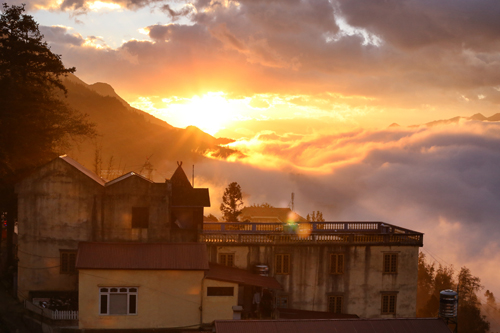




An overnight train combined with hours of carefully teetering over rice fields in the mountains of Sapa left us exhausted. Sam led the way up one last hill in the village of Ta Van to our home for the night. We’d opted to stay in a local house, but didn’t fully understand what that meant until we arrived.
“Hello” was one of the few English words our host spoke. Sam motioned to us to remove our boots and put on slippers as to not get the house dirty. It was dark except for the fire pit in the kitchen. Our host squatted back down over the fire, stirring the vegetables we’d soon eat. The house was large, but empty. The kitchen had only a few low stoops for sitting, a trash can filled with rice, a wooden table for meal prep, and a cabinet with small bowls and chopsticks. A waterspout in the corner was used for washing dishes. There were five red plastic chairs and a folding table that moved from room to room depending on the need. The living room and two beds were not separated by a wall. Behind the TV there was a ladder to the loft where we found two hard mats and a thick blanket: our bedroom. The bathroom was outside and the porch had the most magical view overlooking the village.
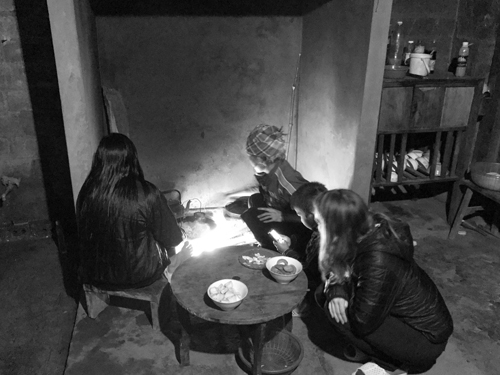
Sam joined our host by the fire. A little boy wandered in watching videos on a cellphone, the only other light in the room. We drank Coca-Colas outside and listened as the oldest of her three sons motioned to us to come and eat. On the folding table was now a spread of chicken with onions, pork with carrots, tofu with chilis, greens, and a mound of white rice. We scooped rice into small bowls and picked at the rest with chopsticks, watching as her sons ate quietly and quickly, eager to get back to their friends in the living room still watching TV. Our host’s husband came home just as we were finishing and insisted on sharing shot after shot of homemade rice wine served out of an Aquafina water bottle. Not long after the power went out, the boys scattered, and everyone grabbed their headlamps. One single candle was lit in the center of the table.


We slept so well that night, waking early to the sounds of roosters spread across Ta Van. Ducks wandered quietly into the kitchen as we sat outside drinking coffee. They were shooed away, then fed dried corn off the cob. Our host went back to cooking the pig breakfast. We felt so well cared for in her home. We were struck by the obvious: This is very different, but how different was it really? Little boys still watched TV, played with cars, and made swords out of bamboo. The family ate dinner together, talked late into the night, and took care of one another. Even in seemingly tougher areas, home is still home.
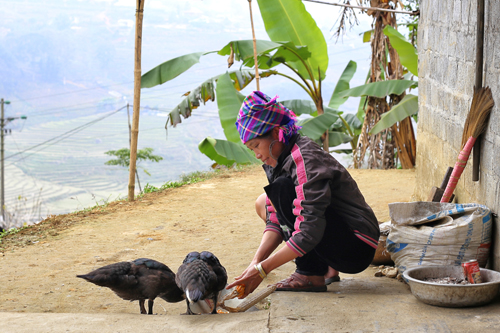
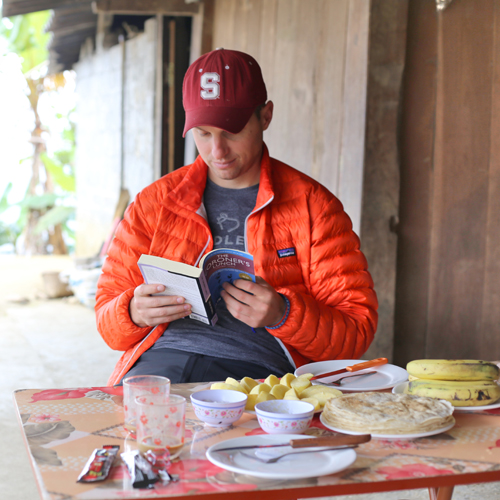
The Sapa Sisters tour that we took while in Sapa is run by local Hmong women. Sam was our wonderful guide!


1.) As recently as 20 years ago, the Hmong women got married at just 14 or 15 years old. A man would decide which woman he wanted to marry, then find 10 friends to help him kidnap her at the market. (We’d hoped kidnap was a more playful term here, but it isn’t.) He’d take her to his house for three days and rape her, then bring the child back to her parent’s home. Her parents, fearing she’d be pregnant, would force her to marry the man, meaning she’d move to his village and spend the rest of her life caring for him and their children. The practice was officially banned when women started committing suicide as a result. However, this still happens some today, but less and less.
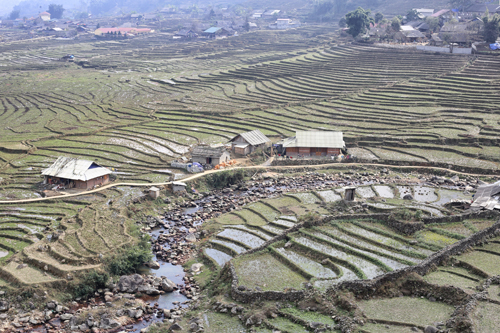
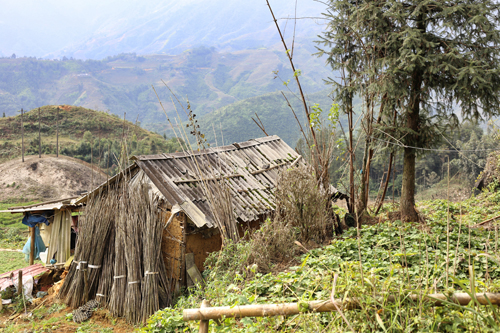
2.) The Hmong continue to put a wonderful energy into making their local clothing when western style clothes have become cheaper and more plentiful. To begin to describe this process, the Hmong women start with hemp, patiently turning that into string during a 3 to 4 month process. They dye it a deep blue from a plant, leaving the skin on their fingers permanently a greenish-blue. They weave the string into fabric with a loom and then very carefully hand-stitch together many delicate patterns and designs into the fabric. The Hmong women are supposed to make one outfit for every member of their family every new year. Making these clothes is so clearly a labor of love, pride, and appreciation for their own culture and tradition.
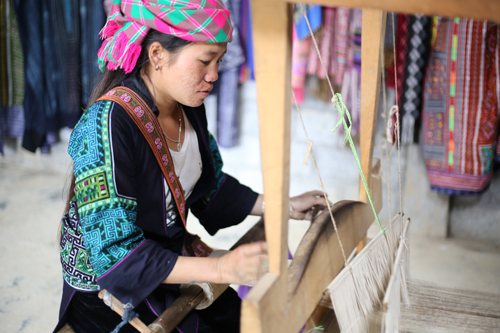

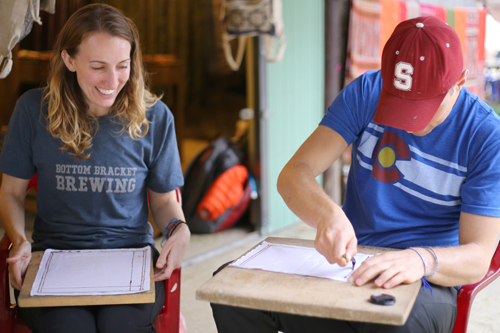
3.) Most of the Hmong people practice a religion described as shaman. When you get sick, it means your spirit has left you. You go to the shaman, a very old woman, and she tells you how to get better. If you have a headache, she prescribed boiling water applied to your forehead for 20 minutes. If this doesn’t work, you go back and the shaman gives you a silver bracelet. If, after a few days, this still doesn’t work, you go to a new shaman.
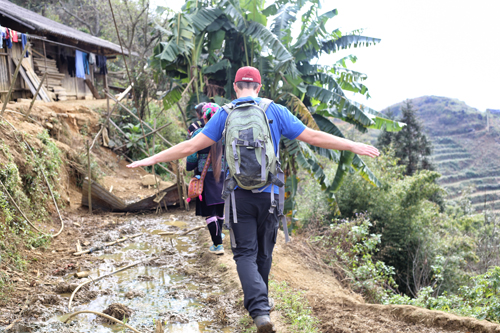

4.) Hmong parents want sons. Though daughters may help them with housework, a son will care for them when they’re old. Often, women will have 3 or 4 girls, hoping the next will be a boy. Sometimes, they’ll buy a boy from another family who has a few or whose parents are addicted to opium. If a woman produces no sons, she stands the risk of her husband divorcing her. Women, on the other hand, would have a very hard time divorcing their husbands, even in situations of abuse or alcoholism.
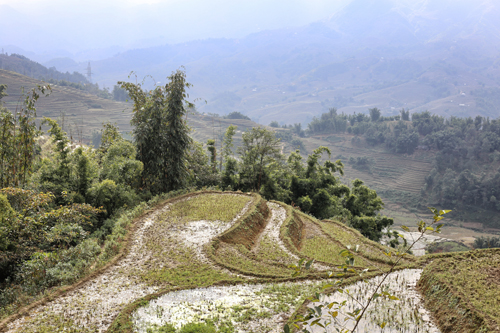
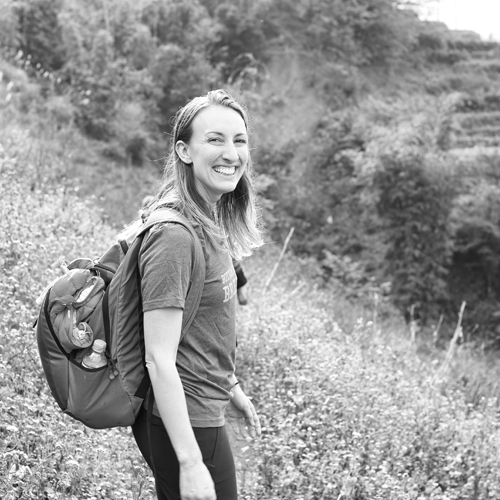
5.) Dozens of little girls ran to us along our hike, selling bracelets for 10,000 dong (equivalent to 50 cents). We had to decline though, in the hopes that their parents would begin sending them to school instead of off to work. It wasn’t until recently that the Vietnamese government helped to build schools, dotting every village in yellow buildings. Sam, our guide, never saw the inside of a classroom as a child.
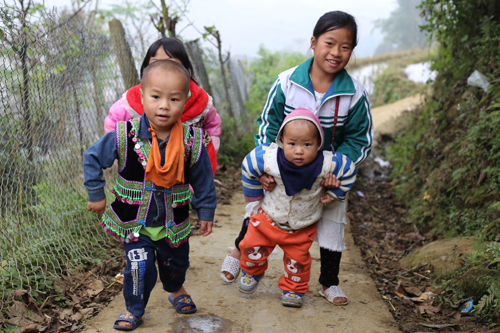
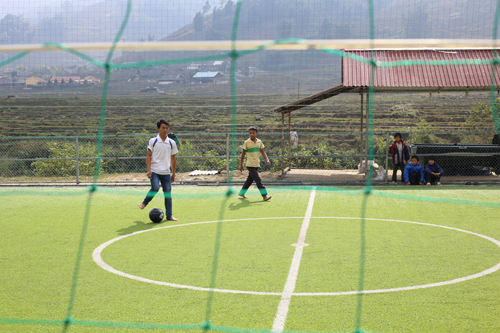
6.) Our Hmong guide seemed so satisfied and fulfilled. It is so easy for us coming from our western ways to pass judgment on what success should look like, or on what everyone should be striving for in their life. Sam, our guide, however, seems to have life more figured out than most of us. She loves being a guide, and she hopes her daughters also get to be guides when they grow up. When asked where she would want to visit or travel, she said to a beach. Not somewhere too far or too foreign, just something a little new. Sam is in the process of building a wonderful and simple new home, which she was so proud to share with us. She sends her daughters to school every day, takes care of the home, spends days at a time with tourists sharing her countryside with them, and just has a zeal for life that was contagious. Thank you Sam for sharing a piece of your world with us.






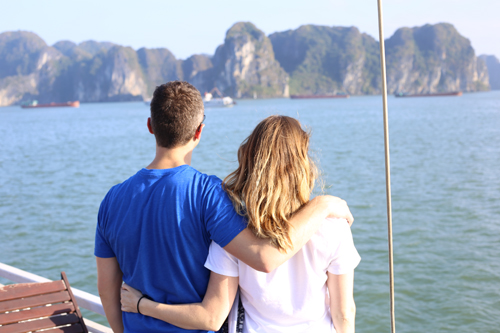



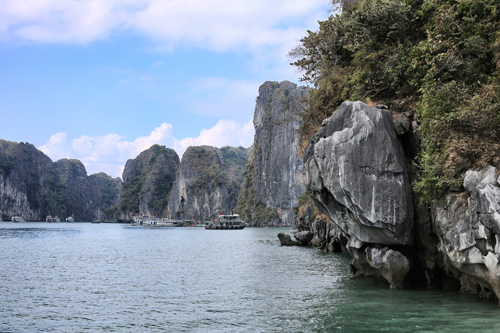
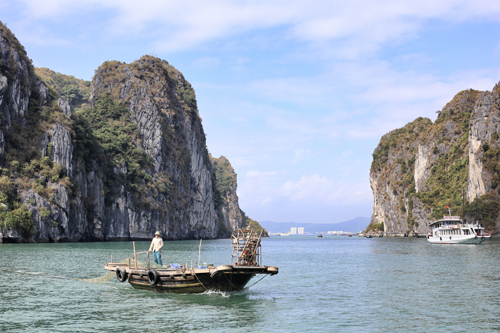


The biggest adrenaline rush today comes in between activities, in between meals, and in between destinations. It is the literally about the journey. The chaos that is the streets of the old quarter in Hanoi give us a new found appreciation for traffic lights and walk signals. Sidewalks are crammed with scooters so that’s not an option, intersections have limited to no rules, and the road is filled with motorbikes, taxis, bicycles, and pedestrians all pretending not to notice the other. The trick: walk slowly and consistently across, while also pretending not to notice anyone else so that they won’t assume you’ll stop. The good news is that after practicing this a couple dozen times, I dare say you do start to get the hang of it. And eventually, we even start to appreciate the craziness that exists atop each of these scooters – babies without helmets, people riding every which way, three or four people to a bike, enormously towering cargo loads, and more.
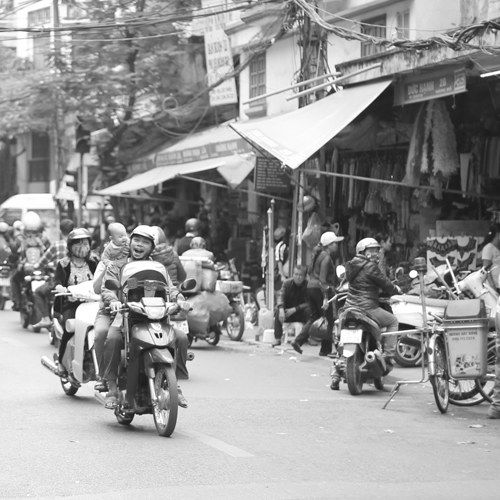
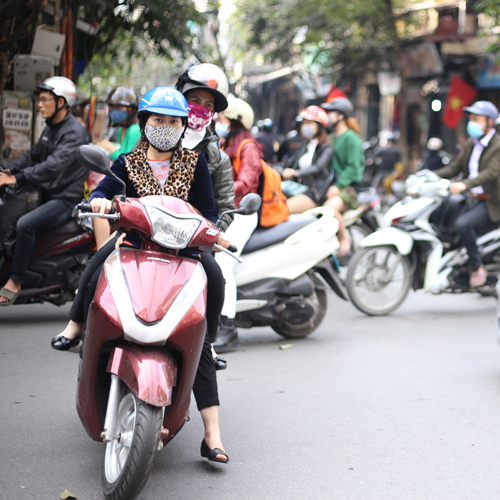

Seoul is a blessing in disguise. Our time here is an accident, but Lindsey and I settle into our new reality and decide to make the most. We wake up Monday morning, ready to experience Seoul.
Breakfast: The concierge at our hotel helps us to chart a path for the day, starting with breakfast at a noodle shop tucked away in an alley in Myeondong. It’s the authentic feel we were craving. Old women work with plastic bowls in the back, their ingredients strewn in bags and hung in the alley. Locals come and go in the time it takes us to decide what to order. The food is spicy, delicious, and a steal at just $5 each.
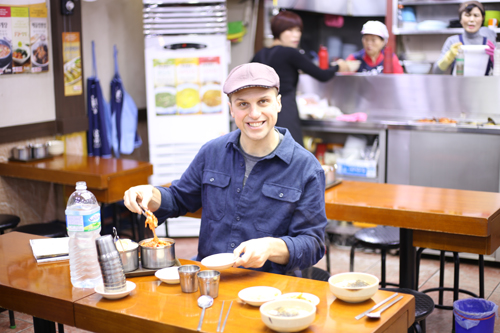

Morning stroll: Although tea isn’t as big in South Korea as it is in some other Asian countries, we couldn’t resist green tea lattes from O’Sulloc Tea House. We sip slowly (they were… thick) as we wander the quiet main street Myeondong. This is the place to go for all Korean skincare products. Think masks made of snail mucus. The loud music blending together from each storefront is energizing. Along the way, we visit the Myeondong Cathedral, famous both for its Catholic significance and its advocacy of democracy. We round out our morning walk on the Cheonggyecheon, an urban park along the waterway that is unexpectedly decorated with some of the most playful and eccentric Christmas decoration.
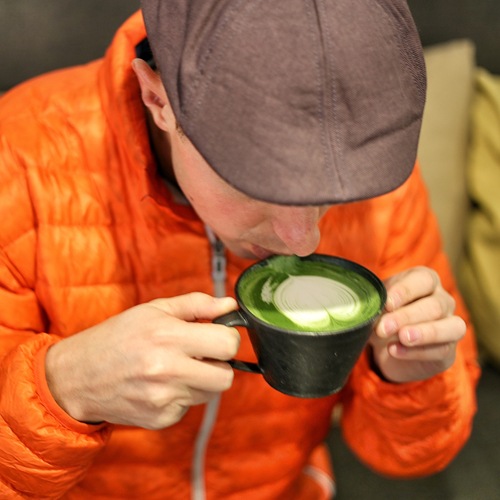
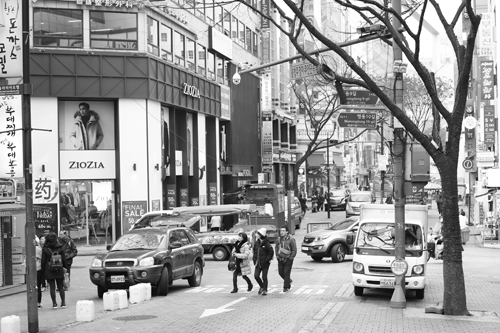

Late morning pick-me-up: We find a piece of San Francisco when we step into Tesarosa Coffee near Gwanghwamun park. It has the hipster baristas, the expensive beans, the over-priced pastries, and the rustic yet modern décor. And for all of that, we love it! The coffee is great and we feel refueled and ready to continue.
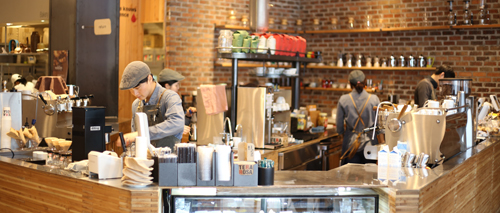
A piece of Korean culture: Gyeongbokgung palace is a beautifully restored palace in the north of Seoul. It is truly regal and beautifully restored. The sun comes and goes as we walk through the many levels of this palace, and each new corner presents us with more magical moments.

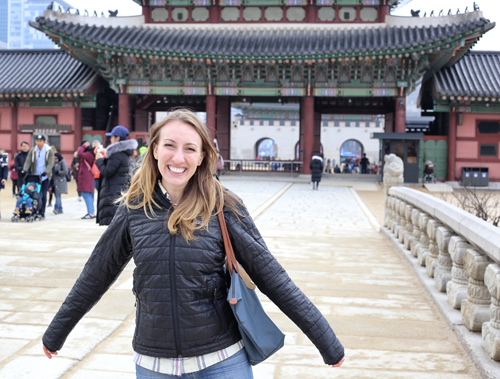

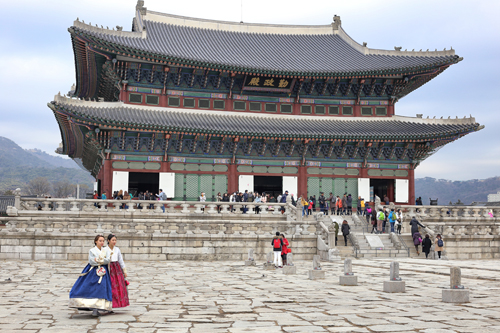
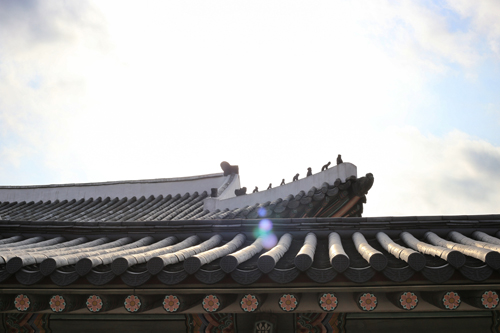
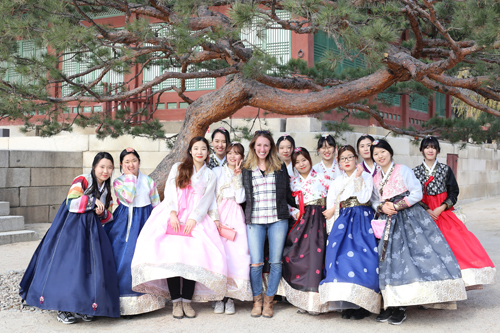
Lunch and afternoon shopping: After the palace, we head to Insadong, a part of Seoul with traditional shops and restaurants. We enjoy meandering through shops, looking at art in all of its forms from ceramic to paintings to sculptures. We sample dragon hair candy and buy a scroll that reads, “Every day is new”. It feels fitting given the circumstances. Bibimbap calls for lunch, so we find a spot called Gogung to rest.
A step back in time: With our stomachs full, we walk to Bukchon hanok village whose steep streets remind us of San Francisco. Each resident’s home is numbered, leading visitors along a path that offers a glimpse back in time. The beautiful roofs, the detailing on the doors and walls, and the window paneling all let us imagine what Seoul might have looked like many years ago. Highly recommend.
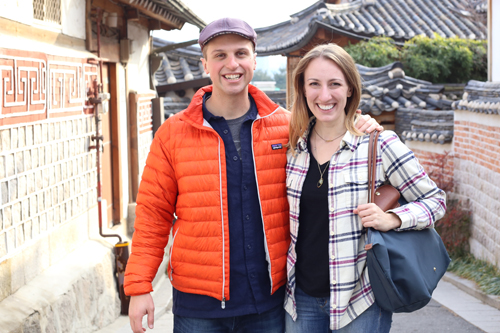
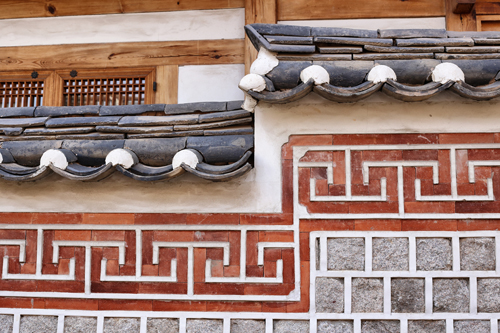
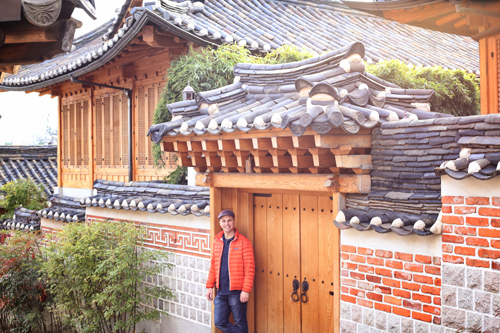
The other side of the river: So far today, we’ve explored the north side of the Han river, but to get a sense of Seoul, we can’t leave without exploring a new area. So we head to Garosugil near Gangnam, a tree-lined street full of up-scale shops and restaurants. It’s Boston’s Newbury Street in South Korea. One store called Line Friends is drawing a real crowd, so like any good tourists, we also venture in. We don’t know exactly who these friendly looking characters (stuffed animals) are, but we still hold a photo shoot with an extremely oversized bear to commemorate this occasion.

Dinner time: Exhausted, we end our day with some Korean BBQ at Two Plus (TwoPpul DeungShim). The beef that we have is incredible, and by definition straight off the grill.
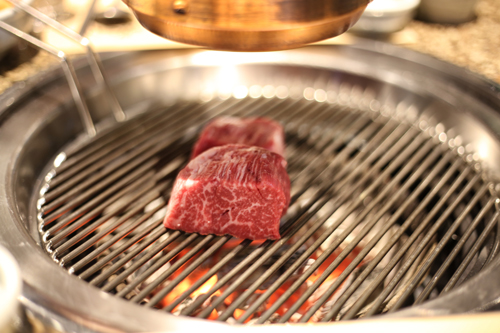
Evening markets: We thought this night was done until we saw flashing lights from the other side of our hotel. We wandered over, slipping under the streets and through the metro to reach the place where we’d started our day: Myeondong. This time, Myendong was alive with dozens of street vendors selling juice, fried shrimp, and Korean snacks. The street seemed to be brighter at night than it was during the day.
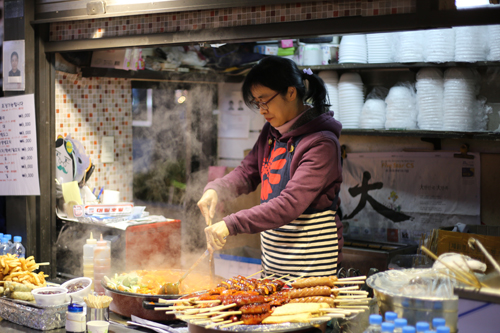
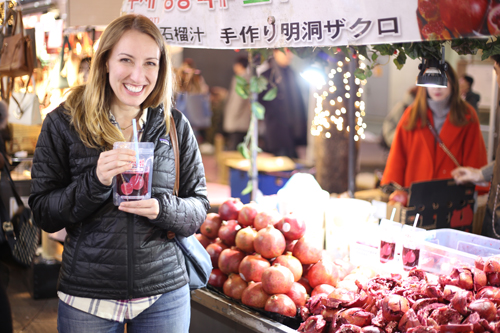
And with that, we call it a day. 36 hours well spent in Seoul, South Korea.
A disclaimer: I will discuss the events that start our journey to Hanoi with a much calmer disposition than we felt while living through them. That said, I wouldn’t mind if a couple of the airlines find this post so they can hear some of my frustrations with the events of today. And with that, here goes my story.
We are so excited for our next adventure – Vietnam and Laos. Bags packed, reservations made, itinerary printed, and we even get to the airport early. That’s where the plan goes awry.
At SFO, Virgin American refuses to check us all the way through the Vietnam. Something about being co-operators with China Southern, it being an international flight, and not actually listening to us when we try to see if there’s any way to help us. We get to the terminal and all Virgin America flights are delayed (or cancelled). They give some excuse about winds being stronger than usual, but we’re skeptical. Flights coming in from all over (East, South, and North) are impacted. It’s the merger – thanks Alaska Air. The systems are so broken, they can’t even assign us seats until 30 minutes before boarding, which doesn’t happen until almost 3 hours after our scheduled departure. The biggest cause of our delay is there’s no crew available. It’s an operations nightmare, and we’re the unsuspecting bystanders.
Only 50 minutes to LAX, but just late enough we can’t make our connection on China Southern. And to add insult to injury, China Southern and Virgin America keep sending us back and forth as no one wants to claim responsibility. I guess that’s what co-operators means. Good to know. The China Southern flight hasn’t taken off, but despite two-dozen angry passengers arguing with the check-in folks, no luck. Apparently Virgin America had given out some boarding passes, but not to everyone. And to those folks with boarding passes all the way through to their final destination, China Southern checks them in. Reminder: getting checked-in to our final destination from Virgin America was something that Lindsey and I couldn’t get, and when we ask Virgin America’s customer service, it’s something that they say is impossible. Oy. I think the situation hits its climax when one very unfriendly China Southern attendant rips up a teenager’s boarding pass right in front of her.
We do find one person at Virgin America who is trying to fix everyone else’s mess. After waiting almost three hours, she sets us up with flights on Korean Air for the next day. We spend the night in La Canada (thanks mom and dad), and when we wake up the next morning, we find that our latest flight arrangement also delayed, meaning we’ll miss our connection in Seoul. Not our day/weekend. We head to the airport to work things out. When we arrive, Korean Airlines says that our flight was never actually was confirmed and that the plane we were supposed to be on is full. It’s infuriating. Mom has thought ahead and taken a defensive position in line at Virgin Airlines. Eventually we have the two airlines talking on our two phones (mine and Mom’s), duking it out. Both want to pass off responsibility and we’re not sure we’ll ever get to Hanoi, let alone in a timely manner. After over an hour of back and forth, we get seats on a plane to Seoul that afternoon and decide to make the most of our 36-hour layover.
London definitely has a certain charm about it. I’m not sure if it’s the accent or the history or the posh style or something else, but there’s something about it that makes it feel like I may be living in a movie. To drum up this feeling even more, Lindsey and I tour Soho, where we drop in every other coffee shop for a flat white. The sun is out, the pastries are warm, and the coffee delicious – overall, a great morning activity!
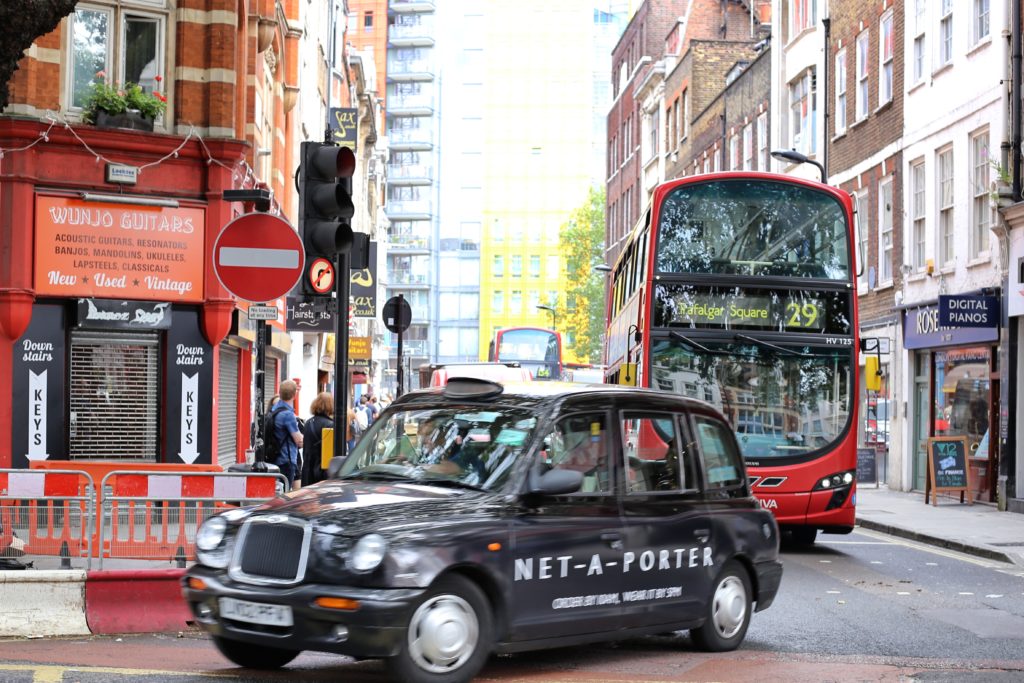
At another break in wedding activities, we head over to Kensington Gardens, again met by Lindsey’s friend, where we enjoy a refreshing (and very sweet) Pimm’s Cup complete with Pimms, fruit, cucumber, lemonade and mint. To complement the Pimms, we eat some delicious scones and other snacks.

No British experience is complete without fish and chips, and maybe some chicken mushroom pie, both some of London’s delicacies that can’t be passed up. Between the wedding, seeing old friends, and diving into London’s sights, sounds and tastes, we leave the city with a true appreciation.
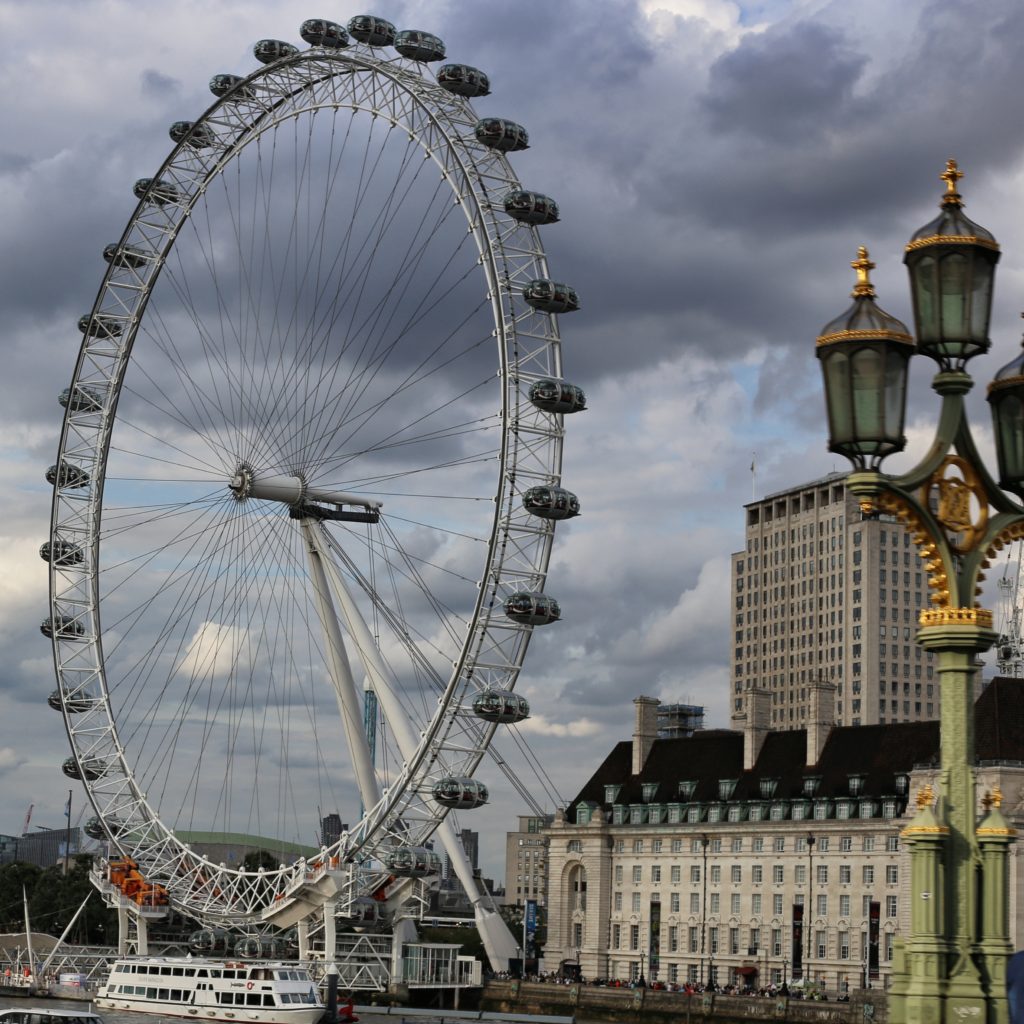
Although we don’t find Hugh Grant or Julia Roberts walking the streets of Notting Hill, we do find a rose petal latte at Farm Girl café that is unique, delicious, and beautiful.
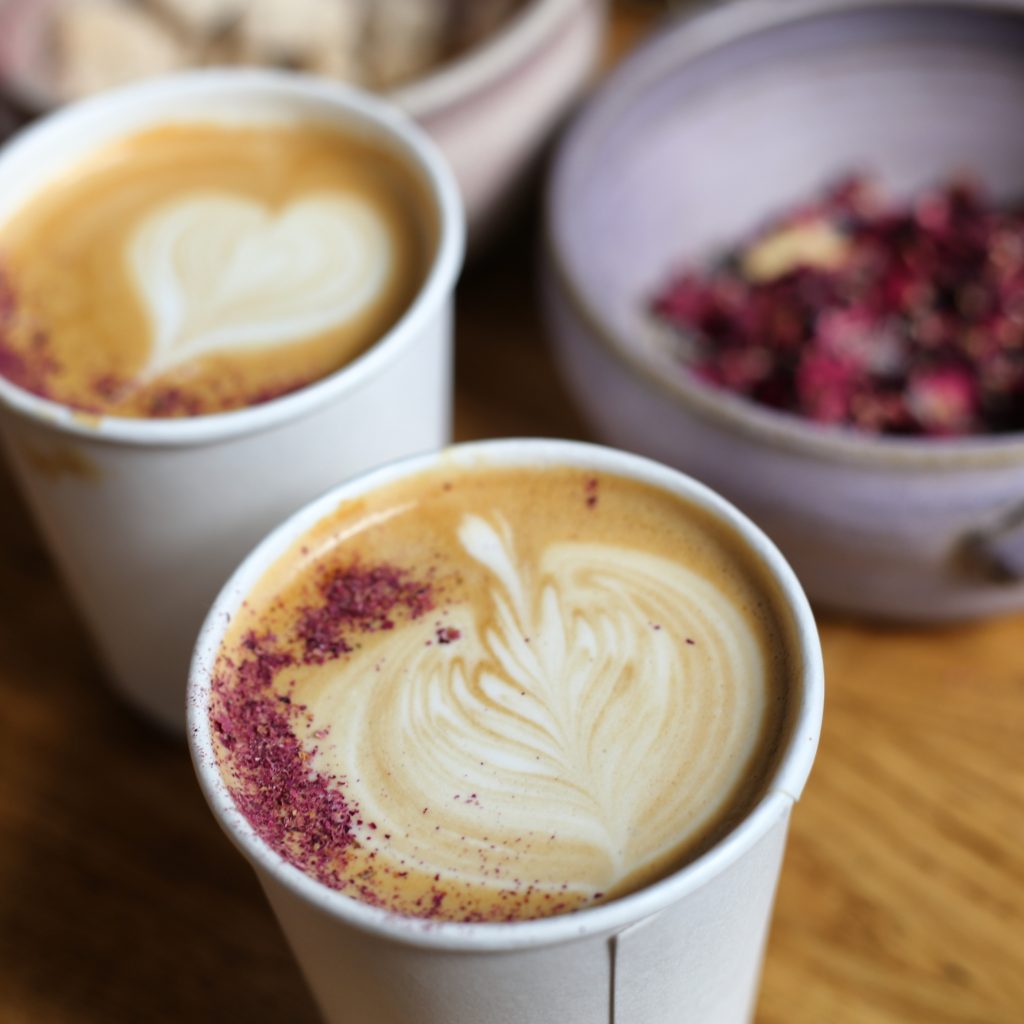
On Saturday morning, there is an outdoor market lining Portobello Street. We stroll up and down and around the block, soaking up the pastel painted houses, antique pop-up shops, coffee cafes and pastry shops. It all makes for a beautiful morning.
